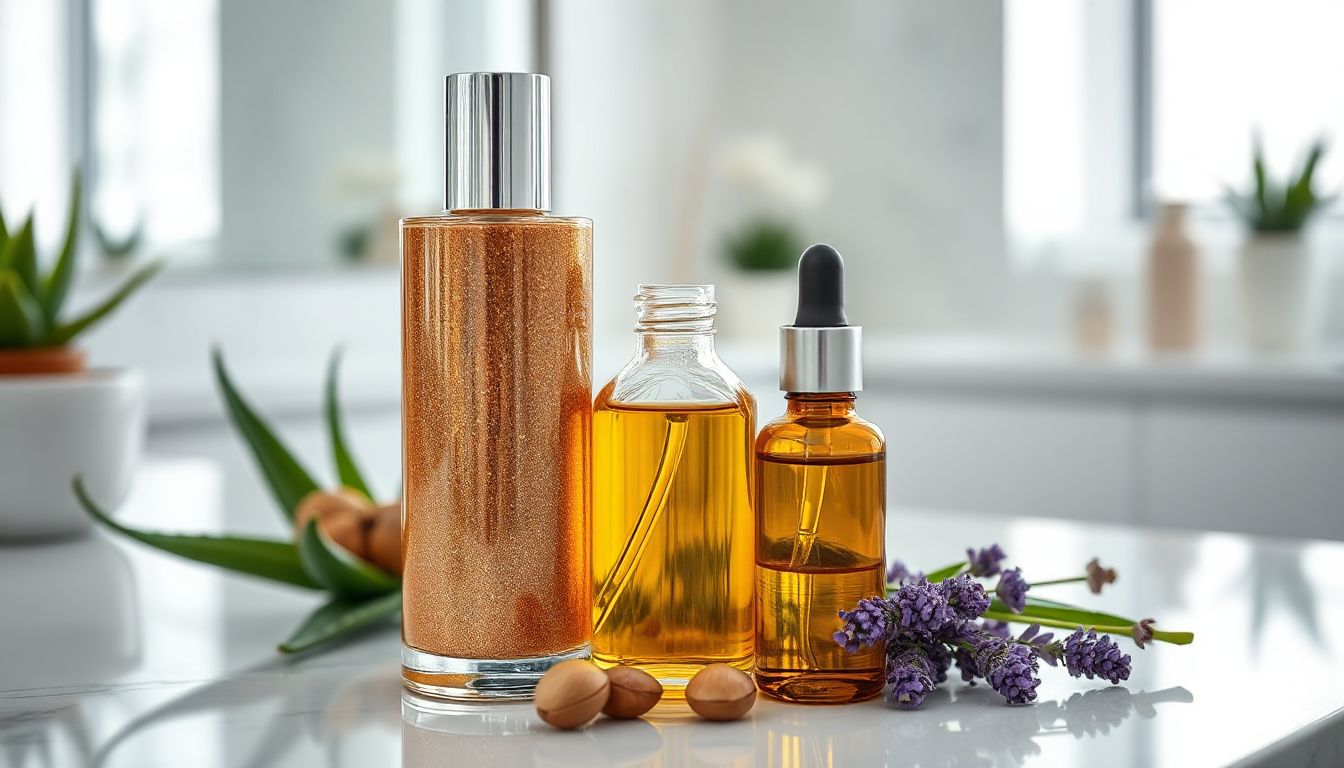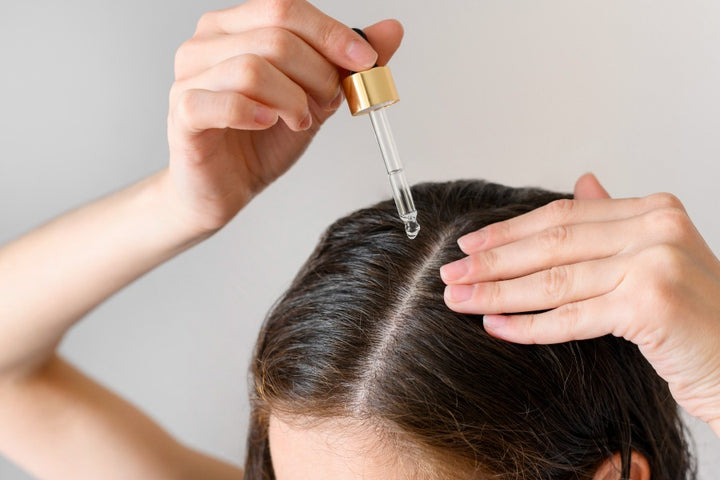
Hair oil or hair serum? Find out what works best for your hair type
 Taking care of your hair isn't just about looks—it's about health too. Whether you want shiny locks, tame frizz, or stronger strands, the right products make a big difference. Among the top choices are hair oils and hair serums, but many people get confused about which one to choose. Both are popular, but they serve different purposes and suit different hair types. This article breaks down what each product does so you can pick what’s best for your hair and get the most out of your routine.
Taking care of your hair isn't just about looks—it's about health too. Whether you want shiny locks, tame frizz, or stronger strands, the right products make a big difference. Among the top choices are hair oils and hair serums, but many people get confused about which one to choose. Both are popular, but they serve different purposes and suit different hair types. This article breaks down what each product does so you can pick what’s best for your hair and get the most out of your routine.
What is Hair Oil?
Hair oil is a thick liquid made from natural or synthetic oils. It usually contains ingredients like coconut, argan, jojoba, or castor oil. These oils penetrate the hair shaft and scalp to nourish from within. They help hydrate dry hair, strengthen strands, and keep your scalp healthy. Some oils are better for repairing damage, while others are great for adding shine. Natural oils tend to be gentler, but there are synthetic options that might work faster.
How to Apply Hair Oil for Best Results
Choose the right oil:
- Fine hair: Lightweight oils (argan, jojoba)
- Thick/curly hair: Rich oils (coconut, olive)
- Scalp issues: Tea tree or rosemary oil
Application method:
- Warm 2-3 drops in palms
- Massage into scalp for 5 minutes to stimulate growth
- Work through lengths to ends
- Leave for 30+ minutes (or overnight) before washing
Frequency:
- 2-3x weekly for dry/damaged hair
- 1x weekly for maintenance
Benefits of Hair Oil
- Restores shine and softness
- Repairs split ends and breakage
- Reduces hair fall by strengthening roots
- Hydrates scalp and prevents dandruff
- Protects from heat/UV damage
- Improves hair elasticity
What is Hair Serum?
 Serums are lightweight, often silky liquids packed with ingredients like silicones, vitamins, or plant extracts. Silicone-based serums create a smooth film over your hair, helping to control frizz and boost shine. Silicone-free serums usually rely on natural oils or alternatives, focusing on nourishing rather than coating. Serums don't sink in as much as oils—they tend to sit on the surface to give that glossy, sleek look. They are perfect for smoothing rough hair and creating shine quickly.
Serums are lightweight, often silky liquids packed with ingredients like silicones, vitamins, or plant extracts. Silicone-based serums create a smooth film over your hair, helping to control frizz and boost shine. Silicone-free serums usually rely on natural oils or alternatives, focusing on nourishing rather than coating. Serums don't sink in as much as oils—they tend to sit on the surface to give that glossy, sleek look. They are perfect for smoothing rough hair and creating shine quickly.
How to Apply Hair Serum Correctly
Select by need:
- Frizz control: Silicone-based
- Heat protection: Thermal serums
- Fine hair: Water-based formulas
Step-by-step application:
- Start with clean, damp hair
- Use 1-2 pumps (adjust for length)
- Rub between palms and apply mid-lengths to ends
- Avoid roots to prevent greasiness
- Style as usual
Pro tip:
- Reapply 1 drop on dry hair to refresh styles
Key Differences Between Hair Oil and Hair Serum
| Feature | Hair Oil | Hair Serum |
|---|---|---|
| Composition | Mainly oils, natural or synthetic | Usually, silicones or natural ingredients |
| Texture | Thick and heavy | Lightweight and silky |
| Absorption | Penetrates deep into strands | Sits on the surface |
| Main Purpose | Nourish, hydrate, repair | Smooth, shine, control frizz |
| Use Cases | Daily nourishment, scalp health | Styling, finishing, shine boost |
How to Choose Between Hair Oil and Hair Serum Based on Hair Type
For Curly and Wavy Hair
Curls and waves tend to be dry and frizz-prone. Oils help lock in moisture and define your natural texture. Try lightweight options such as argan or jojoba oil. They won’t weigh down your curls or waves. Serums are great for long-lasting frizz control—look for silicone-based formulas. Apply a few drops on damp hair for bounce or on dry hair to tame flyaways.
For Fine and Thin Hair
Thin hair can get weighed down easily. So, go for very light oils like argan or a small amount of jojoba. These add moisture without making hair limp. Pick a lightweight serum that lifts volume instead of flattening it. Use serums sparingly after styling to add shine without sacrificing fullness.
For Thick and Coarse Hair
Heavy hair benefits from deep oils like castor, olive, or coconut that hydrate and soften. Rich serums with nourishing ingredients help smooth and manage texture. Apply oils to the ends or scalp for repair, and use serums as finishing touches. Be careful not to overload your hair, or it might look greasy.
For Damaged and Color-Treated Hair
Hair that has undergone coloring or damage needs extra care. Use nourishing oils like olive or argan to prevent further harm and keep coloring vibrant. Select serums with heat protection and color-safe ingredients for styling. Apply these products regularly but avoid overdoing it; the goal is to nurture, not weigh down.
Practical Tips on Applying Hair Oils and Serums
How to Apply Hair Oil Effectively
- Warm a small amount of oil in your hands.
- Focus on your scalp for a gentle massage to boost circulation and healthy growth.
- Use on lengths to prevent split ends and add shine.
- Apply before washing as a pre-shampoo treatment or after washing on damp hair for extra moisture.
How to Use Hair Serum for Best Results
- Dispense a few drops into your palms.
- Rub hands together and distribute evenly through damp or dry hair.
- Focus on ends and flyaways for a sleek look.
- Avoid applying too close to the roots to prevent a greasy scalp.
Combining Hair Oil and Serum
Layering products can boost your hair health and style. Use oil first for deep nourishment, then finish with serum to smooth and add shine. For example, apply oil on damp hair at night, rinse in the morning, then seal the look with serum. Tailor routines based on your hair type for best results.
Expert Insights and Recommendations
Hairstylists agree that choosing the right product depends on your hair's needs. "Use lightweight oils for fine hair and richer oils for thicker or damaged strands," says a leading trichologist. Many trusted brands suggest applying serums after washing and oils as weekly treatments. Avoid common mistakes like overusing products or choosing the wrong type for your hair, which can lead to greasy or limp hair.
Conclusion
Finding the perfect product starts with understanding your hair type. Hair oils are best for deep nourishment, scalp health, and adding moisture. Hair serums excel at smoothing, controlling frizz, and creating shiny finishes. Your ideal routine might include both, layered correctly. Regularly evaluate your hair’s needs—what worked months ago might not work today. With the right match, you can enhance your hair’s health and style with confidence.
Remember: your hair is unique. Tailor your products and habits accordingly, and watch your hair become healthier and more radiant.
FAQs: Hair Oil vs. Serum
1. Can I use hair oil and serum together?
Yes, you can use them together for optimal results. Apply nourishing oil first for deep hydration and scalp nourishment, then follow with a lightweight serum to seal in moisture and add shine enhancement. This combination works especially well for damaged hair or color-treated hair needing both repair and protection.
2. Which is better for frizz control—oil or serum?
Serums, especially silicone-based ones, are superior for immediate frizz control as they coat hair strands. Oils help prevent frizz long-term by improving hair health through moisturizing and hair repair.
3. How often should I use hair oil?
For fine hair, use light oils like argan 1–2 times weekly. For thick/coarse hair, rich oils like coconut or castor can be used 3–4 times weekly. For scalp nourishment, massage oil into your scalp 30 minutes before washing.
4. Can serums replace leave-in conditioners?
Some silicone-free serums can double as leave-in conditioners by providing hydration. However, serums primarily focus on shine and smoothness, while leave-ins prioritize moisturizing and detangling.
5. Do hair oils stimulate growth?
Certain oils like castor or rosemary may support growth stimulation by improving scalp circulation and reducing breakage through anti-damage repair.
6. Are serums safe for fine hair?
Yes, serums are safe for fine hair if you choose lightweight formulas, avoid applying to roots to prevent greasiness, and use sparingly (1–2 drops maximum).
7. Which is better for heat protection?
Serums often contain heat-protectant ingredients, making them ideal for heat styling. Oils like argan offer mild heat protection but can smoke at high temperatures.
8. Can I use serum on dry hair?
Absolutely! Serums work well on dry hair for taming flyaways, adding shine enhancement to styled hair, and reviving second-day hair.
